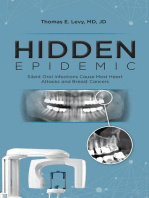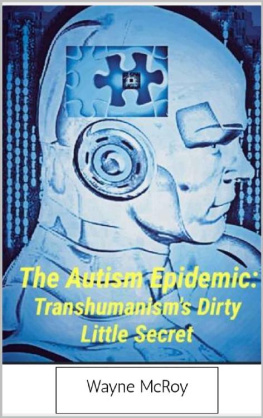Sandra Kahn - Jaws: The Story of a Hidden Epidemic
Here you can read online Sandra Kahn - Jaws: The Story of a Hidden Epidemic full text of the book (entire story) in english for free. Download pdf and epub, get meaning, cover and reviews about this ebook. year: 2018, publisher: Stanford University Press, genre: Children. Description of the work, (preface) as well as reviews are available. Best literature library LitArk.com created for fans of good reading and offers a wide selection of genres:
Romance novel
Science fiction
Adventure
Detective
Science
History
Home and family
Prose
Art
Politics
Computer
Non-fiction
Religion
Business
Children
Humor
Choose a favorite category and find really read worthwhile books. Enjoy immersion in the world of imagination, feel the emotions of the characters or learn something new for yourself, make an fascinating discovery.

- Book:Jaws: The Story of a Hidden Epidemic
- Author:
- Publisher:Stanford University Press
- Genre:
- Year:2018
- Rating:4 / 5
- Favourites:Add to favourites
- Your mark:
- 80
- 1
- 2
- 3
- 4
- 5
Jaws: The Story of a Hidden Epidemic: summary, description and annotation
We offer to read an annotation, description, summary or preface (depends on what the author of the book "Jaws: The Story of a Hidden Epidemic" wrote himself). If you haven't found the necessary information about the book — write in the comments, we will try to find it.
Jaws: The Story of a Hidden Epidemic — read online for free the complete book (whole text) full work
Below is the text of the book, divided by pages. System saving the place of the last page read, allows you to conveniently read the book "Jaws: The Story of a Hidden Epidemic" online for free, without having to search again every time where you left off. Put a bookmark, and you can go to the page where you finished reading at any time.
Font size:
Interval:
Bookmark:
JAWS
THE STORY OF A HIDDEN EPIDEMIC
SANDRA KAHN and PAUL R. EHRLICH
Foreword by ROBERT SAPOLSKY
AN ENVIRONMENTAL HEALTH SCIENCES BOOK
STANFORD UNIVERSITY PRESS
STANFORD, CALIFORNIA
Stanford University Press
Stanford, California
2018 by Sandra Kahn and Paul R. Ehrlich. All rights reserved.
Illustrations by Susan Szecsi
An Environmental Health Sciences Book
No part of this book may be reproduced or transmitted in any form or by any means, electronic or mechanical, including photocopying and recording, or in any information storage or retrieval system without the prior written permission of Stanford University Press.
Printed in the United States of America on acid-free, archival-quality paper
Library of Congress Cataloging-in-Publication Data
Names: Kahn, Sandra, Dr., author. | Ehrlich, Paul R., author.
Title: Jaws : the story of a hidden epidemic / Sandra Kahn and Paul R. Ehrlich.
Description: Stanford, California : Stanford University Press, 2018. | Includes bibliographical references and index.
Identifiers: LCCN 2017058481 (print) | LCCN 2017058937 (ebook) | ISBN 9781503606463 (e-book) | ISBN 9781503604131 (cloth : alk. paper)
Subjects: LCSH: JawsHealth aspects. | JawsAbnormalities. | Malocclusion.
Classification: LCC QM105 (ebook) | LCC QM105 .K34 2018 (print) | DDC 611/.92dc23
LC record available at https://lccn.loc.gov/2017058481
Cover design: Rob Ehle
Cover image: Dr. Mara Jos Muoz
To John and Mike Mew in recognition of their great service to humanity, and to David, Ilan, Ariela, and Anne for their patience and support.
CONTENTS
by Robert Sapolsky
FOREWORD
The Surrealist painters were fond of an epigram penned by an obscure 19th century French poet. Beauty, they would say, is the chance meeting on a dissecting table of a sewing machine and an umbrella. This was a celebration of the Surrealists love of random, capricious events; of absurd, dislocating juxtapositions. The book that you are holding generates a different sort of epigramintensely interesting, it suggests, can be the outcome of the chance meeting over a dinner table of an orthodontic scholar and an eminent evolutionist.
Human cultural evolution has been one long string of examples of the law of unexpected consequences. We invent agriculture, which leads to food surpluses, which leads to job specialization, and before you know it, weve invented socioeconomic status, the most crushing way of subordinating the low ranking that primates have ever seen. We invent sedentary dwelling and permanent structures, and soon were dealing with the public health consequences of something no self-respecting primate would ever doliving in high-density populations in close proximity to its feces. We domesticate wolves into being companions, and soon were dressing up our dogs in Halloween costumes and buying Pet Rocks. The emergence of modern humans has generated some surprising twists and turns.
Kahn and Ehrlich explore one of these unexpected consequences of human culture, sitting at the intersection of the expertise of this unlikely pairing of authors. Who would ever have predicted that the Agricultural Revolution, the Industrial Revolution, and the Westernization of nursing patterns would have led to a distinctive orthodontic profile (in both the metaphorical and literal sense of profile)? And who would have predicted that this orthodontic profile winds up being relevant to an array of aspects of child development, health, and disease? Most of all, who would have predicted that such a capricious combination of authors could have produced a book both extremely interesting and extremely important? If you have kids, like kids, were ever a kid, or have a jaw, its well worth your while to read.
Robert Sapolsky
Neuroscientist and author,
Why Zebras Dont Get Ulcers, and A Primates Memoir
Stanford University
ACKNOWLEDGMENTS
David Leventhal and Anne Ehrlich suffered more with this book than we can ever tell. The only person who suffered more was Pauls (and now Sandras) good friend and frequent editor, Jonathan Cobb. His work on the manuscript transformed Jaws, making it orders of magnitude better. An anonymous reviewer at Stanford Press made many helpful suggestions.
Ellyn Bush, Richard Klein, John Mew, Mike Mew, and Simon Wong were very helpful answering questions along the way. A bunch of other friends and colleagues took time from their busy lives to read and comment on the entire manuscript or critical parts of it. For their enormous help we are indebted to Andy Beattie, Keira Beattie, Margaret Bergen, Corey Bradshaw, Greg Bratman, Kate Brauman, Marie Cohen, Gretchen Daily, Lisa Daniel, Joan Diamond, Jared Diamond, Nadia Diamond-Smith, Anne Ehrlich, Jeremy Feldman, Marc Feldman, Daniel Friedman, John Harte, Mel Harte, Craig Heller, Jill Holdren, David Leventhal, Simon Levin, Karen Levy, Jess Marden, Chase Mendenhall, John Morris, Pete Myers, Graham Pyke, Barry Raphael, Robert Sapolsky, John Schroeder, Susan Thomas, Chris Turnbull, and Kenneth Weiss.
Alan Harvey and his colleagues at Stanford University Press aided us in many ways, as did our agent, Jim Levine. Margaret Pinette did a magnificent job of copy-editing. Its a great pleasure to work with real professionals.
INTRODUCTION
This is a story about a vast and serious epidemic afflicting the developed world increasingly over the last few centuries, one that has gone virtually unrecognized. Jaws is about its origins, how it was discovered, and what we can do about it. The epidemics roots lie in cultural shifts in important daily actions we seldom think about; we just do them automatically. We dont think about chewing, breathing, growing, or sleeping, or even the position of our jaws when were not eating or talking. Most of these actions we dont acquire as habits, that is, by doing them repeatedly; they are inborn. A newborn exposed to air starts to breathe and cry. A baby presented with a nipple opens her mouth, starts to suckle, and after a bit may reward you with a grin. In the evening, after driving you nuts with screaming, your baby sleeps like a log, no training required.
Simple and normal actions, yes. But, we argue, if repeatedly done in certain ways, early in life especially, over time they can undermine your health and alter your appearance in some surprising ways. If you keep your jaws apart and breathe through your mouth rather than through your nose for a few days, bite your tongue once in a while, or have insomnia for a few nights, you are going to be just fine. On the other hand, if you from an early age develop the habits of perpetually mouth breathing, eating mostly soft foods that require little chewing, and sleeping restlessly, snoring and squirming through every night, that could lead to distorted development of your jaws, face, and airway (the passage through which air enters and leaves the lungs) and to serious health problems later oneven to an early death. You would be a victim of a growing epidemic.

Image 1. From an early age, babies can get into the habits of mouth breathing.
Modern industrialized societies are plagued by small jaws and crowded, ill-aligned teeth, a condition that the dental profession refers to as malocclusion (literally bad bite). Malocclusion is often accompanied by mouth breathing. Together, not to mention their negative effects on appearance, the two tend to reduce our quality of life and make us more susceptible to disease. And they are increasingly common. William Proffit, author of the most widely used textbook in orthodontics, the part of dentistry focused on straightening crooked teeth, pointed out the scale of the epidemic in the United States in 1998: Survey data reveals that about a fifth of the population has significant malocclusion, and irregularity in the incisors (crowding of the front teeth) is severe enough in 15% that both social acceptability and function could be affected. Well over half have at least some degree of orthodontic treatment need. If industrialized societies are plagued by jaw problems, might it not be smart to consider what changes might be made in those societies to ameliorate the problems?
Next pageFont size:
Interval:
Bookmark:
Similar books «Jaws: The Story of a Hidden Epidemic»
Look at similar books to Jaws: The Story of a Hidden Epidemic. We have selected literature similar in name and meaning in the hope of providing readers with more options to find new, interesting, not yet read works.
Discussion, reviews of the book Jaws: The Story of a Hidden Epidemic and just readers' own opinions. Leave your comments, write what you think about the work, its meaning or the main characters. Specify what exactly you liked and what you didn't like, and why you think so.








